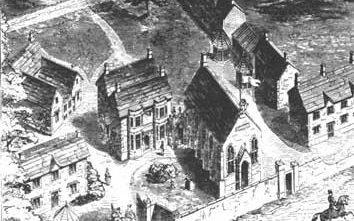|
Battle over sale of Victorian sex cult church
By Jane Mathews
A London church built by a Victorian sex cult is at the centre of a legal battle over who should receive the proceeds from its sale. The £1 million grade II* listed building was erected by a sect called the Abode of Love, which was founded by a defrocked priest alleged to have had sex with a virgin on a billiard table in front of his followers. Henry James Prince started the cult in Somerset in 1846 using donations from wealthy, unmarried women after being expelled from the Anglican church. As the group gained popularity they built other churches around the country, including the Ark of the Covenant in Clapton, north London. When Prince died in 1902, he was succeeded by John Hugh Smyth-Piggott, another defrocked priest who gave racy sermons and told his followers that he was the second coming of Christ. He was reportedly chased from London by an angry mob after a failed attempt to walk on water at a pond on Clapton Common. Smyth-Piggott retreated to Spaxton, Somerset, and continued preaching to a small group of loyal followers until his death in 1927. He had three children, named Life, Glory and Power, who later changed their names to Lavita, David and Patrick. The Abode of Love declined in popularity over the following decades, with the last member dying in 1958. Kate Barlow, one Smyth-Piggott's granddaughters, wrote a 2006 book about her experiences growing up within the cult, which was alleged to have indulged in orgies and married "heavenly bridegrooms" to "soul brides". The Clapton church, which features life-size sculptures of a man, a bull, a lion and an eagle and stained glass windows designed by prominent Victorian illustrator Walter Crane, was left derelict for years. It was eventually sold in 2010 and turned into a Georgian Orthodox cathedral. The 1892 deed stated that any funds from the sale should be used to promote the objectives of the sect. But since the group no longer exists, Smyth-Piggott's granddaughters have claimed that because he was the last surviving member of the original trustees, they are entitled to the proceeds. A statement to the court reads: "All the community members are now long since deceased and gone. The six named are the direct descendants of Beloved and his 'soul bride' ... and are therefore the rightful and only true beneficiaries of the trust." Judgment in the case has been reserved.
|
.
Any original material on these pages is copyright © BishopAccountability.org 2004. Reproduce freely with attribution.
